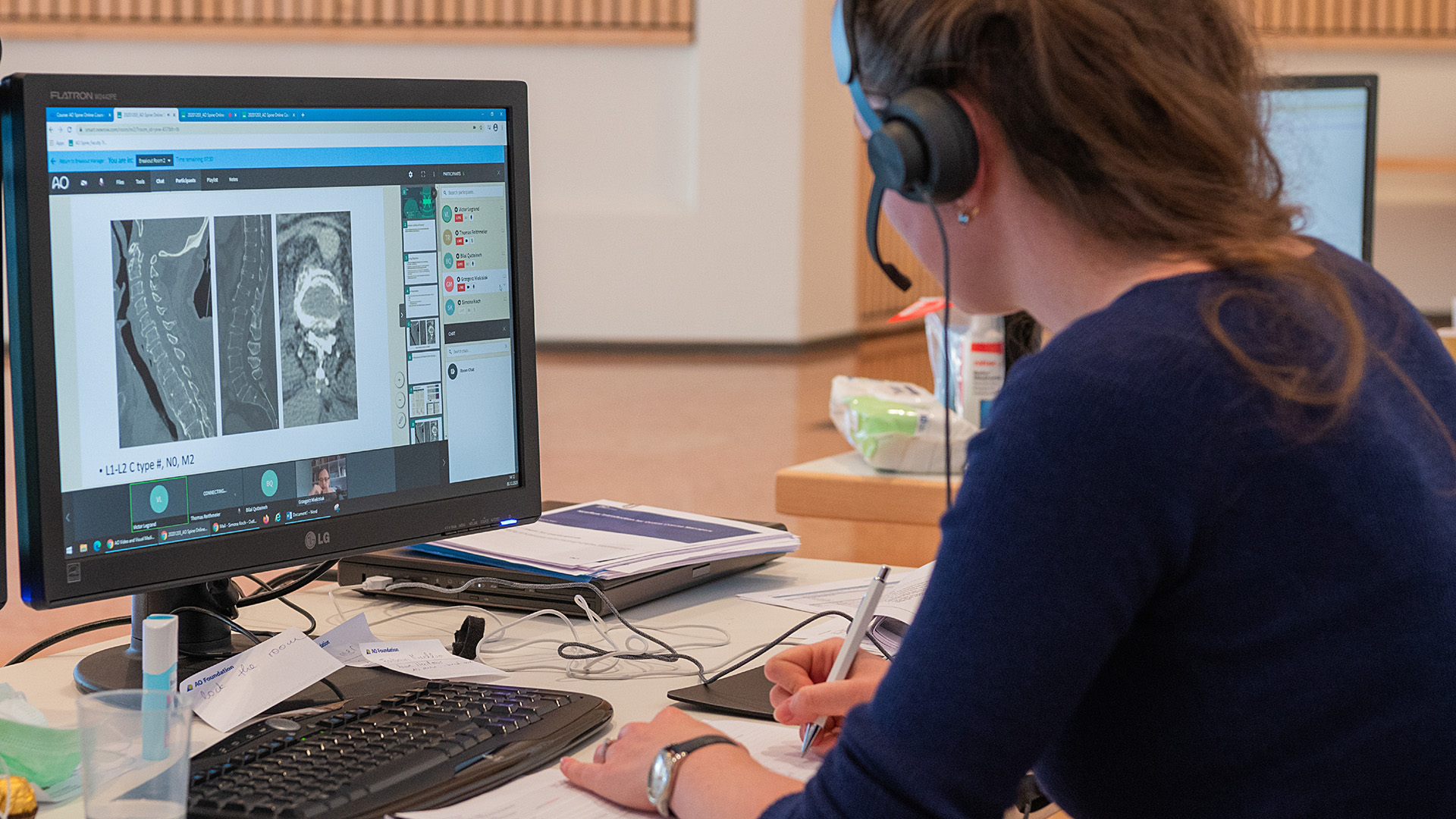Study shows that blended online learning is effective and significantly decreases learning gaps in spine surgery

The study showed that participants’ learning gaps decreased in all three courses and with statistical significance in two of three courses. It found that a fully online blended learning course on spine surgery can be delivered effectively with a high participant and faculty satisfaction rate, and that the asynchronous part of such a course contributes significantly to learning.
AO Spine, as the global leader in spine surgery education, has significant experience in this training subspecialty, but this experience had not been adequately published in the literature. COVID-19—and the AO’s agile pivot to online education in the face of the pandemic—proved to be an opportunity for the study’s authors. They felt that the results of this experiment should be shared with colleagues across the world for developing substantial online educational activities in the future.
This paper is significant for its novelty: It is one of the first papers about the evaluation of distance education accomplished by fully online blended learning on spine surgery. Besides the pandemic, there are many people—especially in underserved parts of the world—for whom travel to a course location is and will remain untenable due to economic reasons. So, the study’s authors expected online blended learning to stay in service of these people, which makes proving its effectiveness even more important.
‘Perseverance and engagement’ a major challenge
Retention of faculty and participants in the learning management system was one of the critical online learning issues underscored in the study. Perseverance and engagement emerged as key factors. Once registration of online blended learning course participants was complete, motivating and retaining faculty and participants become a major challenge. AO Spine worked hard to establish a faculty training program before the courses with invaluable support from the AO Education Institute; this program was a major factor in persuading course chairpersons, educational advisors, and faculty of the feasibility of this learning/teaching experience. These people were instrumental in motivating participants to participate in the activities presented in the learning environment from start to end.
'Blended online' will stay in toolbox
At the time the study was published, although the authors had demonstrated that online learning is effective (at least in significantly decreasing participants’ learning gaps), they did not yet know whether it would be as—or more—effective (as the standard format of online asynchronous (self-directed) learning followed by in-person, face-to-face synchronous learning. In this regard, the AO Davos Courses 2021 had two very similar endoscopy courses in two formats: online, as well as online followed by in-person, face-to-face learning. This afforded the study’s authors the ability to compare these formats for their effectiveness; A paper on this experience is planned.
While the study confirmed the effectiveness of the online format, it also demonstrated that it is less effective compared to the online face-to-face blend. Based on this, unless another pandemic or similar situation imposes face-to-face meeting restrictions, the online format discussed in the paper is not likely to become “the” standard AO Spine educational offering. On the other hand, it will remain in AO Spine’s toolbox as an alternative solution in delivering educational services to the underserved areas of the world.

